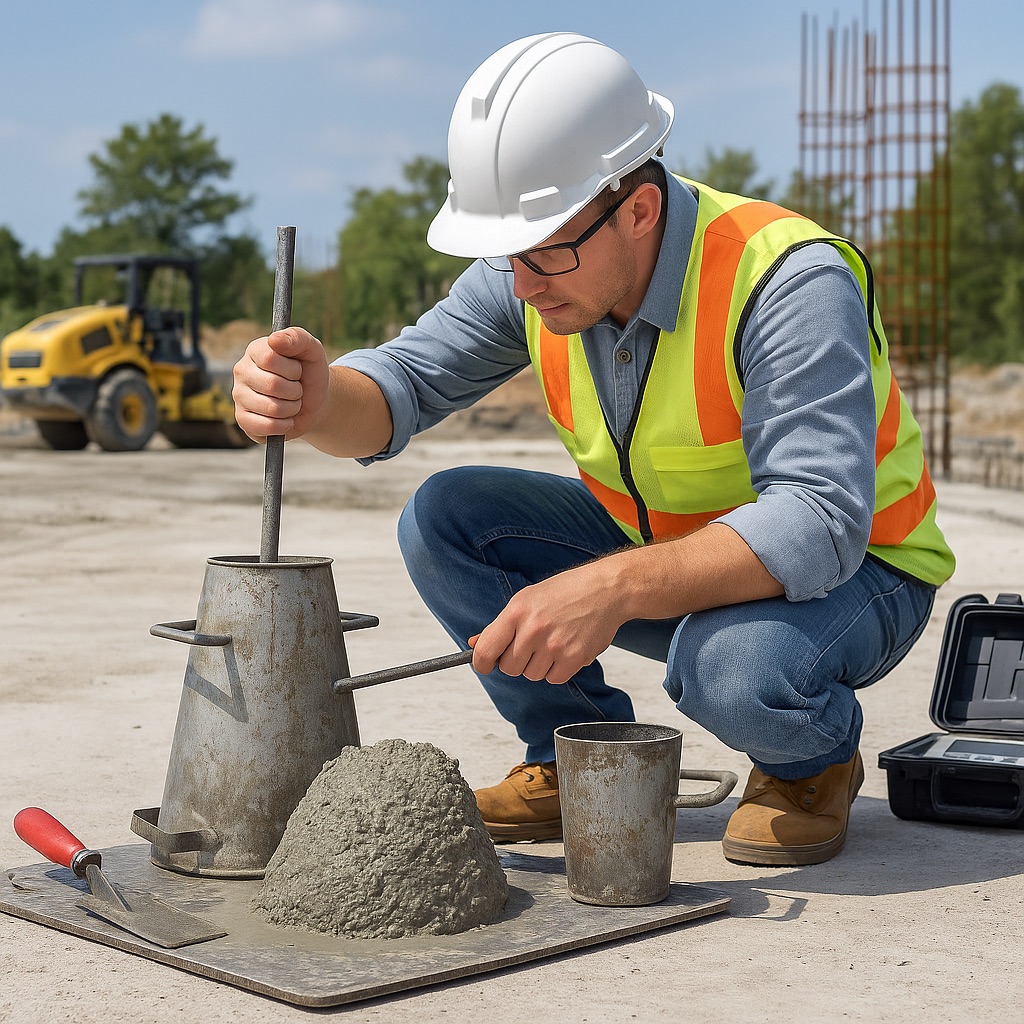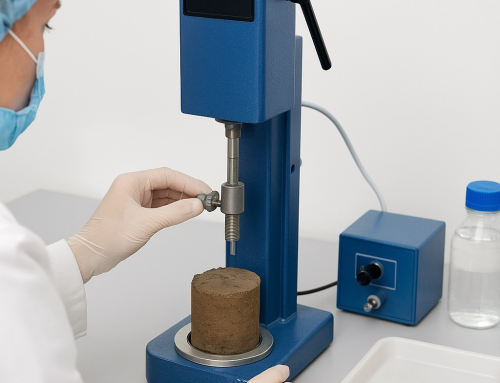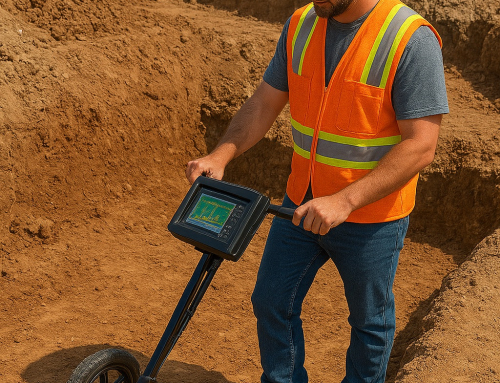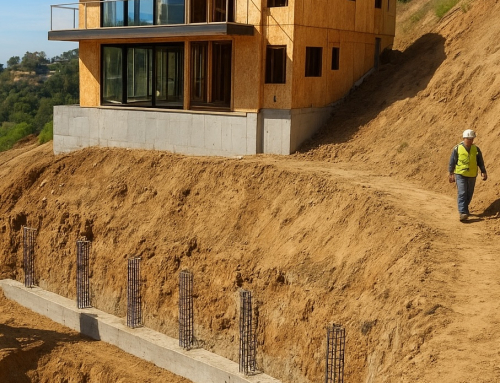Material testing is the backbone of civil engineering. It ensures that all construction materials are safe. Testing also certifies that the material is of high quality. For construction materials, we measure strength, quality, and durability.
Materials not tested may fail to function properly. It can lead to severe results such as cracks, expensive repairs, or collapse. However, testing prevents issues before they occur, it keeps structures safe for decades.
Both field and laboratory testing are essential. Field testing gives quick answers on-site. Lab testing gives accurate, code-approved results. Together, they ensure quality and compliance.
This guide explains the types of tests, methods, and their importance. It demonstrates how testing enhances the strength and safety of the project.
We Ensure Compliance with Local Codes
The Los Angeles government has formed agencies and institutes to control material testing. The authorities are the Los Angeles Department of Building and Safety (LADBS) and the California Geological Survey (CGS).
Moreover, most of the construction follows local rules. These are known as the California Building Code.
These agencies adhere strictly to regulations when it comes to testing. Departments ensure the project’s compliance with local safety measures. It is also certain that the project complies with seismic standards.
Types of Materials Commonly Tested
Civil engineering uses many materials. Each one must be tested for safety. LADBS inspectors check results before approval.
Concrete: It is the most common construction material and it is significantly used. It can be tested for workability, curing, and compressive strength. Testing ensures concrete resists loads and weather, as required by CBC Chapter 19.
Soil: Soil supports the foundation. Testing checks compaction and load-bearing capacity. Poor soil may cause settlement. The CGS provides maps and hazard data to guide soil testing.
Steel: Steel provides structures with both capability and adaptability. It is tested on tensile strength, yield strength, and ductility.
In these tests, CBC Chapter 22 (Steel Structures) is required to ensure safety from earthquakes.
Asphalt: Asphalt is put on pavements and roads. Tests of hardness, stability, and electromechanical properties are checked. Hardness, stability, and electromechanical tests are verified.
LADBS and Caltrans standards require strict testing. It is mainly required to minimize cracking and lengthening of roads.
Aggregates: The aggregates include mainly gravel, sand, and crushed stone. We can test the size, cleanliness, and strength. Aggregates obtained from high levels enhance the use of concrete and asphalt.
Water: The water used in concrete must be freshwater and free from salt or chemicals. CBC Chapter 19 is a limitation on water impurities. Bad water reduces strength. Regular compliance is guaranteed through regular testing.
The right inspections prevent project delays and the risky projects or the budgets. Properly framed inspections safeguard schedules, jobs and project budgets. I
Field Testing vs. Laboratory Testing
Field Tests: Field tests are efficient and time-saving. They give on-site results. Engineers use them in making fast decisions.
Some of these include soil compaction, concrete slump tests, and moisture content tests. Before work begins, LADBS field inspections are often based on these tests.
Laboratory Testing: The laboratory tests are elaborate. They confirm compliance with ASTM and CBC Standards. Common tests include compressive strength for concrete and tensile tests for steel.
Field and lab tests work together. Field tests track progress. Lab tests give certified reports required by LADBS. Both ensure long-term safety.
1. Soil Testing
Soil testing is the first step before any construction begins. Soil testing ensures safe foundations.
LADBS requires geotechnical reports before permits. The CGS and CBC Chapter 18 (Soils and Foundations) also require it. Strong soil prevents settlement and failure.
- Standard Penetration Test (SPT): SPT is a field test. It is used to determine the density and strength of soil. It helps engineers understand how soil will behave under load. Safe foundations are designed based on the obtained results.
- Proctor Compaction Test: It discovers the optimum moisture for compaction. It establishes the compaction level of soil for construction. Proper compaction not only helps in avoiding settlement but also enhances stability.
- California Bearing Ratio (CBR): It tests the soil’s bearing capacity for pavements. It reveals the degree of suitability of the ground for traffic loads. The CBR values should be higher for stronger and more durable road bases.
- Shear Tests: Stress and slope stability of soils. They are used to estimate the danger of soil failure during construction. The information guides the basis wall and foundation designs.
2. Concrete Testing
Concrete is vital for strength and durability. Concrete must be cured properly. Poor curing reduces strength. LADBS inspectors review testing reports before approval. The CBC requires several tests:
- Slump Test: This test is performed on the fresh concrete. It assesses the consistency of concrete and ensures the appropriate workability.
- Compressive Strength Test: It assures load capacity at 7 and 28 days. It demonstrates what the concrete can withstand as crushing forces.
- Flexural Strength Test: This test measures the bending strength of slabs and pavements. It helps to check the concrete behavior under stress.
Read more to find out Why It’s important to ensure compliance with local and state codes for property foundation development.

Civil engineer testing soil and concrete at Los Angeles construction site for safety compliance.
Steel Testing for Foundation Development
Steel ensures stability and flexibility. Strong, ductile steel is essential in Los Angeles. It helps buildings survive earthquakes. LADBS requires certified results for all steel used. It must comply with CBC Chapter 22 and seismic safety rules.
- Tensile Strength Test: It determines the maximum strength of the steel to pull. It measures the steel’s resistance against pulling forces. It defines the tension capacity prior to a failure of the steel.
- Yield Strength/Elongation: This test indicates the deformation and extent to which the steel elongates. These values evaluate the performance of steel under the influence of structural loads.
- Ductility Test: It guarantees the ability to bend but not break. It confirms that the steel can flex safely under pressure or earthquakes.
Asphalt and Bitumen Testing
Asphalt and bitumen are important materials for pavements. Roads, airports, and pavements are made up of asphalt. The LA County CBC and AASHTO standards require tests for safety and performance.
- Marshall Stability Test: It assesses the performance of asphalt for heavy traffic. It assists in ascertaining the capacity of the mix design to withstand deformation.
- Penetration Test: This test checks the hardness and grade of asphalt. It demonstrates the behavior of asphalt under temperature and loading.
- Ductility Test: Prior to cracking, it measures the flexibility of materials. It makes asphalt flexible enough to withstand cracks on the surface.
Proper testing reduces damage and increases road life. LA County Public Works enforces these requirements.
Geological Engineering Standards and Compliance
Compliance ensures legal approval. It also builds public trust. Material testing follows strict standards to protect safety:
- ASTM: Establishes international testing procedures. It guarantees the materials have standards according to technical quality and performance.
- AASHTO: Concentrates on the highways and roads. It directs the testing and design of transport infrastructure.
- ISO: Determines the global accuracy and quality standards. It enhances standardization and uniformity in the global industries.
- California Building Codes: Imposes code requirements locally. It guarantees compliance with the California Building Code during construction.
- LADBS: It vets reports and then issues permits. It confirms that safety and structural regulations are observed in Los Angeles.
- CGS: Offers seismic and soil hazards information. It facilitates safer designs in the earthquake-prone and unstable ground regions.
Conclusion
Material testing is essential for safe construction. In Los Angeles, LADBS and the LA County CBC make testing a legal requirement. The CGS supports safe design with seismic and soil hazard data.
Testing soil, concrete, steel, asphalt, and aggregates prevents failure. It saves money and lives. Every project needs both field and lab testing.
Strong testing means safe, reliable, and long-lasting structures.
Where to get the best material testing?
Choose Marshall Geoscience for material testing. The company meets LADBS, CGS, and LA County CBC requirements.
They provide soil, concrete, steel, asphalt, and aggregate testing. Our certified lab follows ASTM, AASHTO, and CBC. We work with inspectors to ensure your project passes every review.
Marshall Geo provides precise results and expert guidance. You can build safe and compliant structures under their guidance.
Visit Marshall Geoscience today. Make your next project stronger, safer, and fully approved under LADBS, CGS, and CBC.
FAQs
What is the material testing in civil engineering?
Material testing refers to the performance of the building materials. It makes sure that soil, concrete, steel, asphalt, and aggregates are designed safely.
Who can provide certified material testing in Los Angeles?
Marshall Geoscience is certified by the LADBS and CGS for material testing services. You can visit the official website and book a request.
What will occur in case materials are found not to pass a test?
If a material fails, it cannot be used until it passes retesting. Engineers can alter the mix design or source of material. In Los Angeles, construction will not be permitted until materials meet the CBC standards. This is to ensure safety at all costs.
What is the best suitable time to do material testing?
The testing must commence prior to the construction. Preliminary soil tests are undertaken at the planning stage. During and before installation, concrete, steel, and asphalt are subject to testing. Frequent testing guarantees that all phases are within project specification.
Build with knowledge. Build with confidence. Build smart from the ground up.






